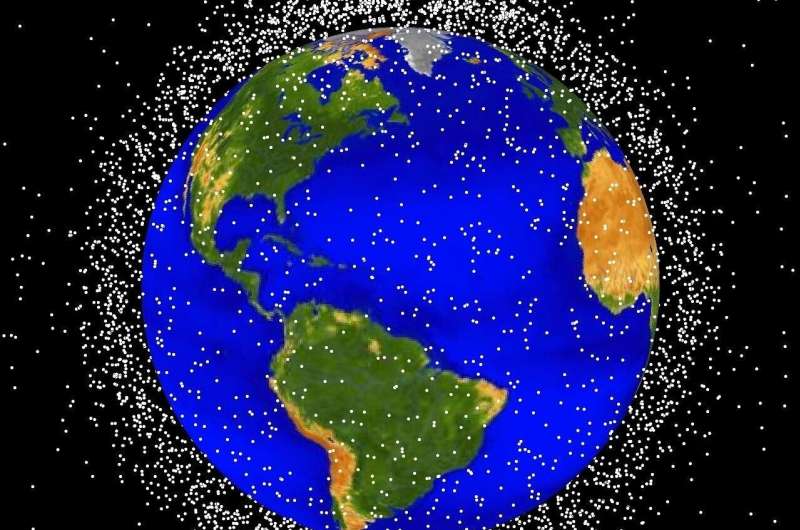This article has been reviewed according to Science X's editorial process and policies. Editors have highlighted the following attributes while ensuring the content's credibility:
fact-checked
proofread
Space debris: A quantitative analysis of the in-orbit collision risk and its effects on the Earth

The amount of space debris has not stopped increasing since the first satellite was launched in 1957. The European Space Agency (ESA) estimates that there are more than 131,000,000 useless space waste objects, between 1 millimeter and 10 centimeters, currently orbiting around the Earth at an average speed of 36,000 kilometers per hour, which come from different sources such as last stages of rockets, satellites that are no longer operational, and even tools lost in space by astronauts.
"Any piece larger than 1 centimeter is potentially lethal in case of collision," says the Professor at the University of Malaga José Luis Torres, who, together with Professor Anelí Bongers, has coordinated a project on Space Economy that establishes, from a quantitative point of view, a theoretical model that determines the rate of satellite launches that is optimal to maximize benefits based on the amount of space debris.
Particularly, using data from the NASA and the ESA, the developed model is based on computational simulations that analyze the effects of anti-satellite tests on the amount of space debris and the probability of collision with operational satellites –there are currently around 6,000 satellites in orbit.
This way, the model proposed by these researchers at the UMA, which has been published in the scientific journal Defence and Peace Economics, dynamically determines the amount of space debris based on the optimal behavior of companies operating in space when establishing the rate of launches and the number of satellites.
According to these experts, the number of launches and satellites is negatively affected by the amount of space debris. "The calculations also show that anti-satellite tests generate more than 102,000 new pieces of this waste larger than 1 centimeter and that its negative effects take 1,000 years to disappear due to the high altitude at which tests are carried out," they assure.
Market failure
The researchers at the UMA have studied the space from an economic point of view, since, as they say, it is a global common good that, as with the high seas, "will end up being overexploited." Moreover, since there is no express regulation, except for a non-binding International Treaty of the United Nations, it is an example of "market failure," because due to the absence of property rights, there is a tendency to misuse this resource and, therefore, generate "negative externalities."
Likewise, they warn that, as we are increasingly dependent on the companies operating in space, especially tech companies, the volume of space debris will continue rising and so will the likelihood of collision.
"We are facing with a huge unregulated market, which problems have just started," underline the researchers at the UMA.
Star Wars: A war in space
Finally, the study quantifies the effects of a hypothetic war in space that simulates the destruction of 250 satellites. Using this model proposed by the UMA, it is estimated that space debris would rise by 25,500,000 fragments larger than 1 centimeter, thus increasing the probability of collision and the number of destroyed satellites.
The objective is to warn of the effects of space debris on the global economy and the potential physical problems that it may cause on the Earth, as well as on the human use of space, which, as they warn on the basis of this simulation, will disappear for both commercial and scientific activities if the current rate of space debris generation continues.
More information: Anelí Bongers et al, Star Wars: Anti-Satellite Weapons and Orbital Debris, Defence and Peace Economics (2023). DOI: 10.1080/10242694.2023.2208020
Provided by University of Malaga



















